Quick links to other Cyprus pages and/or sections Here
The Troodos Mountains
The Troodos Mountains are the largest range in Cyprus, with their highest peak, Mount Olympus (also known as Chionistra), reaching 6,404 feet (1,952m) above sea level. Nestled in the heart of the island, this rugged region is famed for its scenic villages, Byzantine monasteries, and rich geological history.
Laneia (also spelled Lania) is a historic village in the Limassol district of Cyprus, nestled at an altitude of 1,870 feet (570m) upwards on the southern slopes of the Troodos Mountains. The village name is traditionally linked to Lana, the daughter of Dionysus, the Greek god of wine. Located about 15½ miles (25km) from Limassol, it features narrow cobbled streets, stone houses, and picturesque flower-filled courtyards, making it a joy to explore on foot.

Renowned for its centuries-old wine-making tradition, the village is home to a preserved 19th-century wine press known as the “Linos,” a testament to its viticultural past.

Above: Traditional wine press in the Commandaria Storage Museum in Laneia village.
Laneia also features traditional olive presses, reflecting its agricultural heritage. Though better known for wine, Laneia’s olive cultivation contributes to the broader Mediterranean legacy of olive oil production.

Above: Olive press in Laneia
The village is popular with artists in Cyprus and known as an "artist's village", where many local and international artists have studios, galleries, and homes. Visitors can also find local taverns amongst the charming, well-maintained architecture, and there are also opportunities for local nature walks. It is thus a popular destination for visitors seeking authentic Cypriot village life and scenic mountain views. Some more photos taken in the village are shown below:
 |
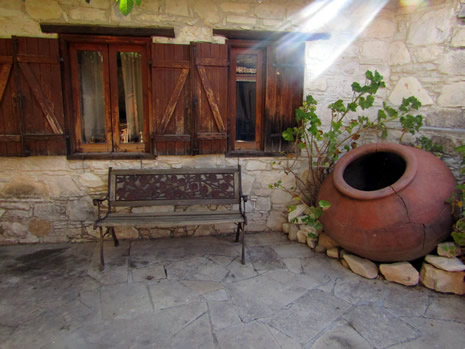 |
|
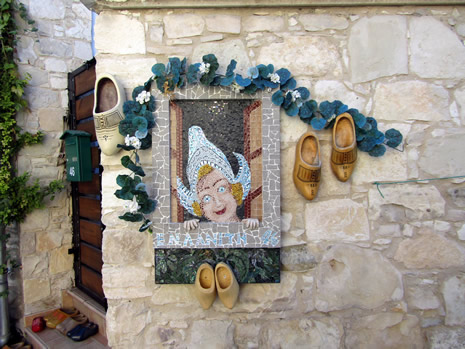 |
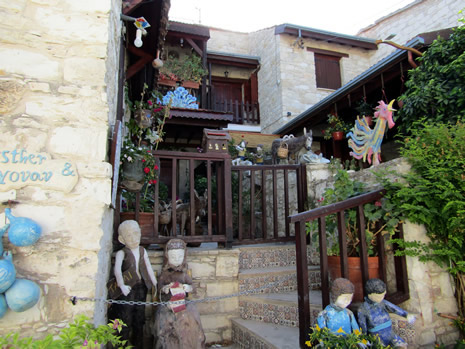 |
|
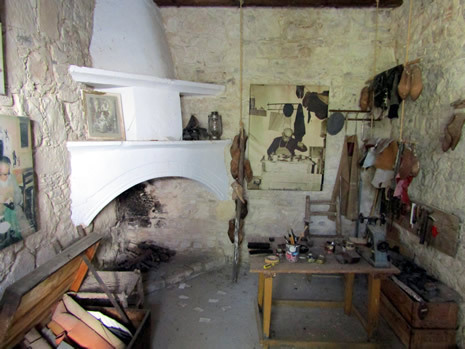 |
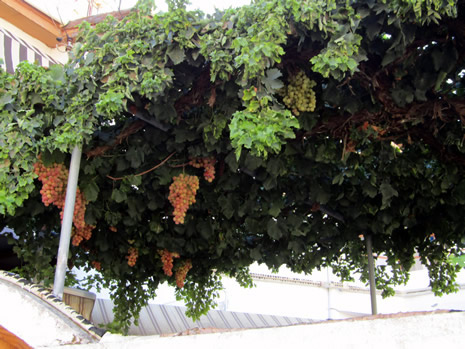 |
|
 |
 |
|
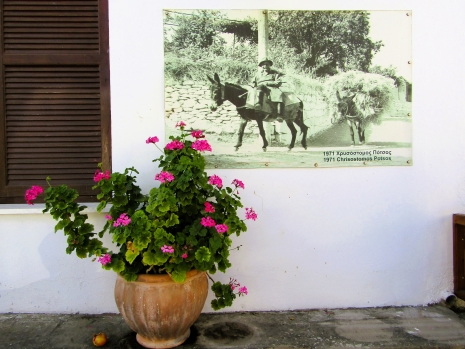 |
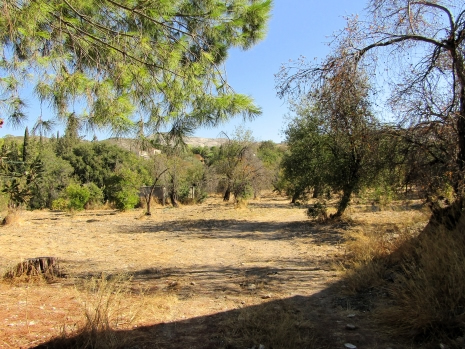 |
Troodos Square is the central hub of the Troodos Mountains in Cyprus, offering a cool mountain retreat surrounded by nature trails and traditional architecture. It features a recently renovated playground, local cafés, and shops selling honey, wine, and handmade goods, making it a popular stop for tourist parties, families, and hikers alike.

Above: One of the tourist shops in Troodos Square, a popular refreshment stop for visitors to the area.
Holy Monastery of the Virgin Mary of Kykkos
The Holy Monastery of the Virgin Mary of Kykkos is one of Cyprus’s most significant and wealthiest religious institutions. It was founded in the late 11th century by Byzantine Emperor Alexios I Komnenos.

Located in the Marathasa Valley at an altitude of 4,324 feet (1,318m), the monastery is dedicated to the Virgin Mary and houses a revered icon believed to have been painted by Apostle Luke. It is a Stavropegic Monastery, meaning it operates independently under the Church of Cyprus, and its abbot is traditionally the Metropolitan of Kykkos.

The site features Byzantine architecture, ornate mosaics, and a museum showcasing religious artifacts and manuscripts. Despite suffering multiple fires throughout its history, Kykkos Monastery has remained a spiritual and cultural landmark, attracting pilgrims and visitors from around the world.

The main church of Kykkos Monastery is a richly decorated Byzantine basilica dedicated to the Virgin Mary, known as Panagia tou Kykkou. It houses the revered icon of the Virgin Mary, believed to have been painted by the Apostle Luke, and is adorned with intricate frescoes, gilded woodwork, and marble detailing that reflect centuries of Orthodox tradition. Note: photography inside the church itself is not permitted.



The Tomb of Archbishop Makarios III
Archbishop Makarios III was the first President of the Republic of Cyprus and a towering figure in both the political and religious life of the island.


His tomb lies atop Throni Hill near Kykkos Monastery, where he began his monastic journey in 1926. Nestled at an altitude of 4,757 feet (1,450m) in the Troodos Mountains, the site was personally chosen by Makarios for its spiritual significance and panoramic views. The tomb itself is a serene, semi-underground structure clad in black marble and crowned with a dome, while a large bronze statue of Makarios stands nearby, symbolizing his enduring legacy.

Above: The church at Throni Shrine is a small, serene chapel dedicated to the Virgin Mary, serving as a spiritual waypoint for pilgrims visiting the nearby tomb of Archbishop Makarios III, blending Byzantine architectural elements with panoramic views of the Troodos Mountains.
There are over 50 wineries in the Troodos Mountains of Cyprus. This region is one of the island’s most prominent wine-producing areas, known for its rich history and diverse grape varieties. A popular stop for tours of the Troodos Mountains is Lambouri Winery (below), now known as LionSpirit Winery & Distillery. This luxury boutique winery, nestled in Kato Platres on the southern slopes of the Troodos Mountains has over 300 years of winemaking tradition and offers award-winning Cypriot wines and handcrafted spirits that reflect the region’s rich terroir and heritage.
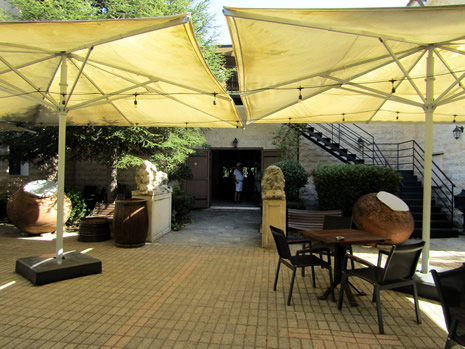 |
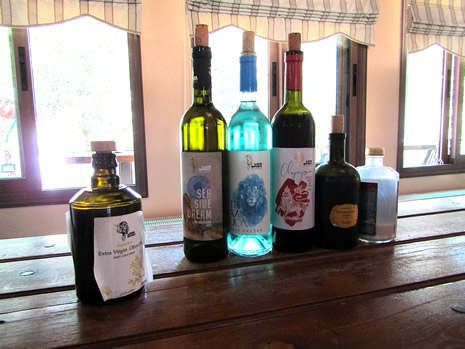 |
Omodos is a picturesque wine-producing village nestled in the Troodos Mountains, known for its cobbled streets, traditional stone houses, and rich cultural heritage.

At its heart stands the Timios Stavros Monastery (Monastery of the Holy Cross), one of the oldest and most revered monasteries in Cyprus. According to legend, the monastery was founded after villagers witnessed mysterious fires in the area, leading to the discovery of a sacred cave containing a cross. Today, the monastery is a spiritual and architectural landmark, drawing visitors with its ornate wood-carved iconostasis and relic believed to be a fragment of the True Cross.
 |
||
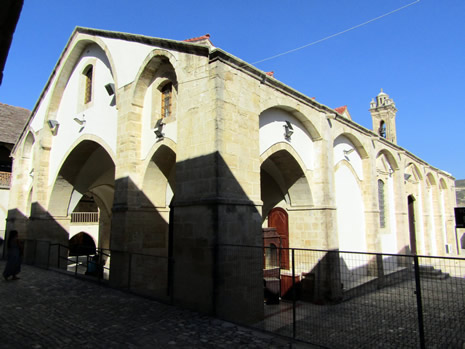 |
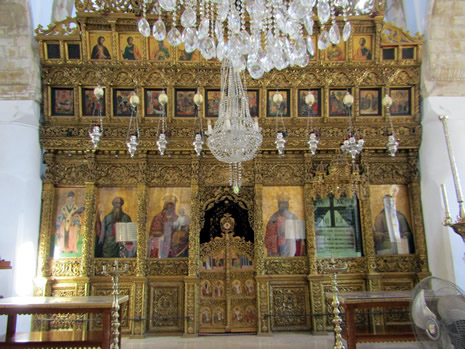 |
|
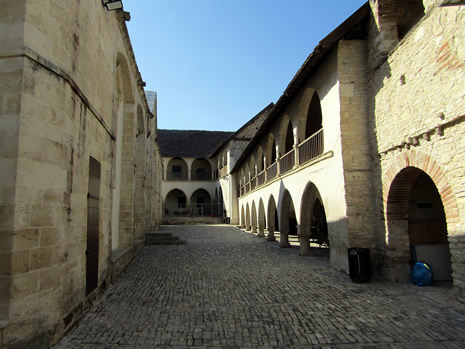 |
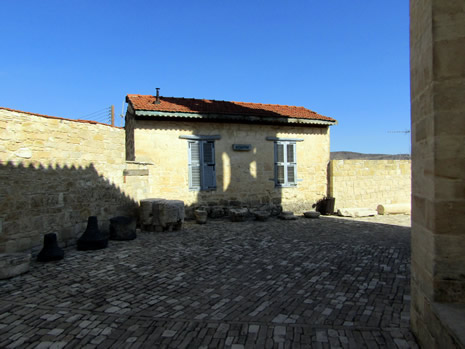 |
|
On the subject of fires, whilst journeying to and from the Troodos mountains from Limassol, during this trip (taken in September 2025), there was plenty of visible damage to the landscape caused by wildfires near Limassol; just a couple of months earlier, Cyprus had experienced its most devastating wildfires in over half a century, centred in the Limassol District. Sparked during a severe heatwave with temperatures exceeding 44°C, the fires began near the village of Malia and rapidly spread across forest and agricultural land.

More than 50 square miles (130km²) were scorched, two lives were lost, and over a dozen villages were evacuated, including Souni and Lofou. The disaster exposed critical gaps in emergency warning systems and prompted international firefighting support from Spain, Jordan, and the UK. The event has since become a stark reminder of Cyprus’s vulnerability to climate extremes and the urgent need for improved preparedness.
Link to Next Page (Page 4 of 5)
Link to Previous Page (Page 2 of 5)
Back to Top